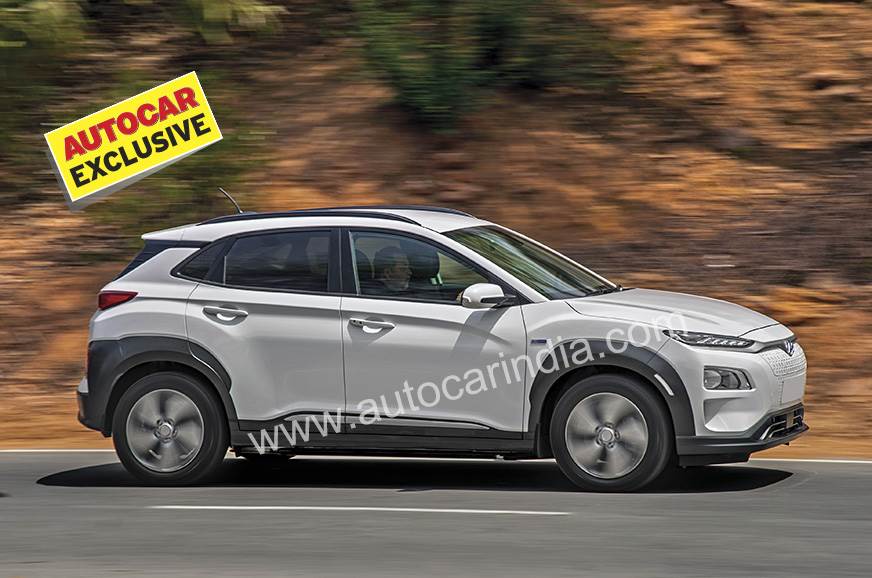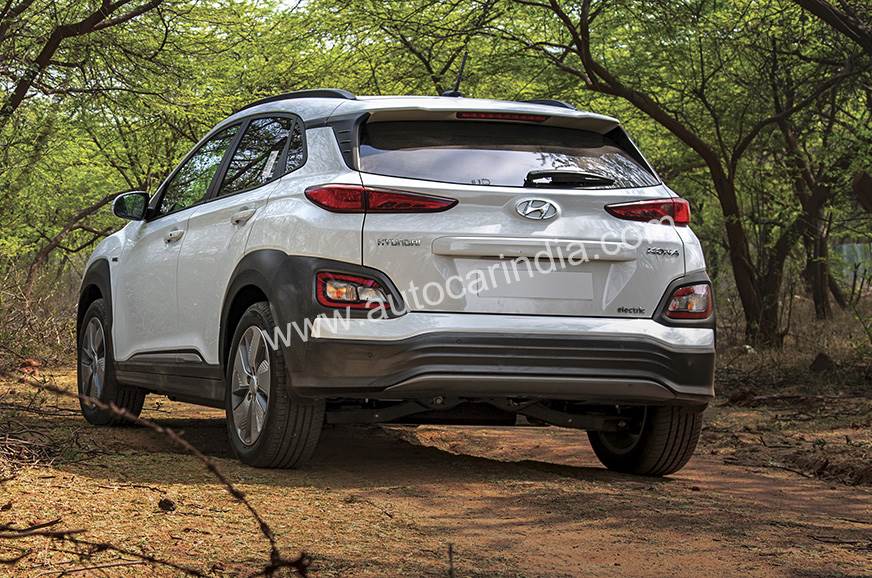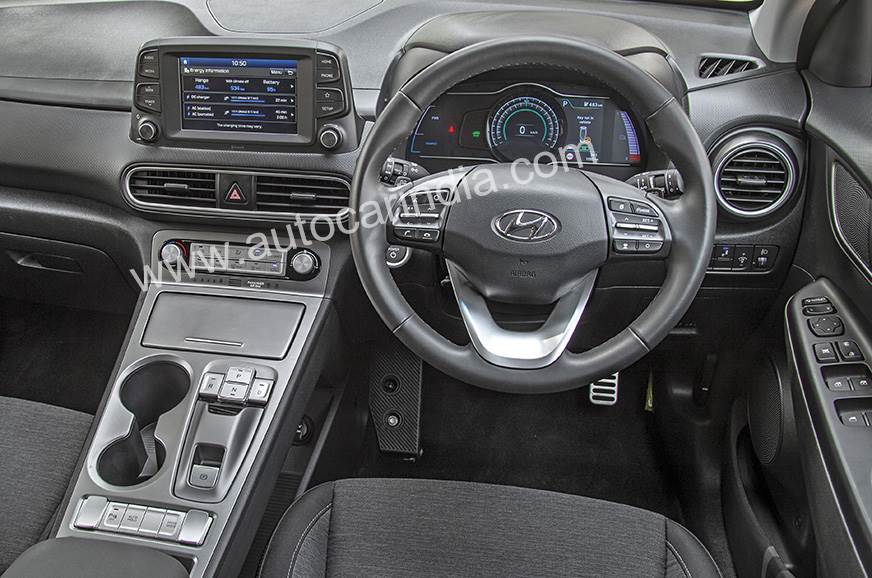


SUVs aren’t green cars. Big, heavy, wasteful and always under the green microscope; they are the favourite whipping boys of the auto industries. The SUV I’m about to drive today, however,
is quite different. For starters, it isn’t that big. At 4.18m in length, it is not too far off in size from Hyundai’s popular Creta. And then there’s the fact that under the hood there isn’t a big petrol or diesel but an electric powertrain. So, as long as you can source your electricity from a green source, this SUV can be squeaky clean.
Expected to be at a showroom near you sometime in July or August, priced at around Rs 20-25 lakh (yes, you read that right), Hyundai will assemble the Kona electric and its battery pack here. The car that will make it to showrooms will come with a 100kW or 134hp electric motor and a 39.2 kWh battery.

The version I’m behind the wheel of, however, is much better specified. It has a larger 64kWh battery and also has a more powerful 150kW motor (204hp). And then let’s not forget it has 395Nm of torque right from the time you tap the throttle.
Now electric cars all deliver some amount of range anxiety. But as soon as I take a look at the digital instrument panel, all my anxiety just vaporises – the range reads 490km! Flips; that’s almost good enough for a week! I’m impressed.
We set off into city traffic, and while it isn’t as dense as it is back home, we get wedged in between large busses and taxis. The Kona, however, blends in easily and motors along quite nicely. Keen to play with the drive modes, I switch to ‘Eco’, and I immediately regret it. While it isn’t totally dreadful, Eco mode takes away what’s best about this electric car – the responsive but silent throttle. And as it doesn’t feel effortless to drive anymore, I switch back. Guess I’d only use this mode when I’m running out of range.

I enjoy driving the Kona in ‘Comfort’ for a bit, I really do, and then once the traffic thins on the outskirts, I switch to Sport mode. Now, two things happen almost simultaneously when I hit the throttle. The first involves wheelspin, a fair amount of it before the electronic controls chime in. And this, mind you, happens at just about any speed when I whack the throttle open. No, I’m not talking about 20,30 or even 50kph – I mean 80, 90 or even a 120kph! And then, as soon as the wheels stop turning, what the Kona does is hurl me back into my seat. Neat.
Sure, with over 200hp you do expect plenty of accelerative force, but the manner in which the Kona is assaulting the horizon and whipping past other cars has me scratching my head.

Will it feel as fast from rest? Only one way to find out . . . to the dismay of my passenger. So left foot on the brake and right foot on the right pedal, I take off. Now the Kona doesn’t exactly explode off the blocks, but once it gets moving acceleration just comes flooding in. Keen to get an idea of how fast it is, I time it from 0-100. The figure I get, however, has me puzzled: Did it just do 100 in under seven seconds? It did! This electric car certainly isn’t boring.
While the strong power delivery is good in a straight line, it does get a bit difficult to modulate smoothly in Sport mode. This is especially true when you find yourself driving a nice set of corners. And what doesn’t help too much either is the slightly wooden brakes and the overly light steering.

The adjustable regen, via paddleshifters, however, is quite a neat trick. You can either use zero regen or set it to suit your driving style and, more importantly, mood. And what’s nice is because adjusting is within easy reach, you even tend to reach for it when slowing down in traffic.
With its heavy battery and stiff springs, ride, however, isn’t very impressive. Bad roads here are few and far between, but every time we roll over a bad patch, the Kona thuds and thumps through. And what’s not nice is that the suspension even tosses you around a fair bit if you drive over bad patches without slowing down.

I must say, I like the stance and profile of the car a lot, however. Looking like a cross in between a running and a trekking shoe, the Kona gets big wheel arches, a tight-fitting roof and a muscular bonnet. The enclosed grille doesn’t look very attractive though. I’m sure Hyundai designers could have thought of a nicer solution. And I don’t care much for the design of the wheels either.
The interior for the Indian market will be quite different and it will have more of an upmarket feel. But even as it is, quality levels are impressive, the cabin has a nice solid feel to it and the front seats are extremely comfortable. What I also like is the fact that drive selection is done via a set of four buttons. The touchscreen on this car, however, was a bit small, and for those who want to be chauffeur-driven, there isn’t too much space in the rear.

Still, when Hyundai brings the Kona to a showroom near you, make sure you take a test drive. Yes, it will have a smaller battery and less range, and power will be lower too, but if Hyundai manages to deliver the Kona at the promised price, this could be among the most popular electric cars around. It will still get a range of 312km, which is more than enough for a day’s driving, even if you knock 100km off that expected figure with some flat-out driving. Get that home charger and your trips to the petrol pump will be for only air and windscreen washer fluid. Wouldn’t that be something? Almost zero running costs. Definitely worth a close look if you are in the market for a Rs 25 lakh SUV.
| Price | Rs 25 lakh (estimated) |
| Length | 4180mm |
| Width | 1800mm |
| Height | 1555mm |
| Wheelbase | 2600mm |
| Motor type | Permanent magnet, synchronous motor |
| Power | 150kW (204hp) |
| Torque | 395Nm |
| Gearbox | Single-speed, automatic |
| Battery type | Lithium-ion |
| Battery capacity | 64kWh |
[“source=autocarindia”]